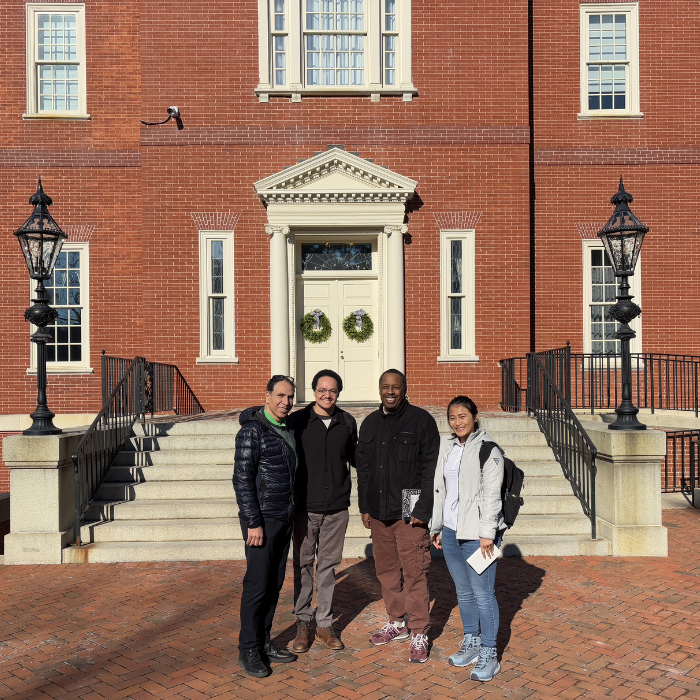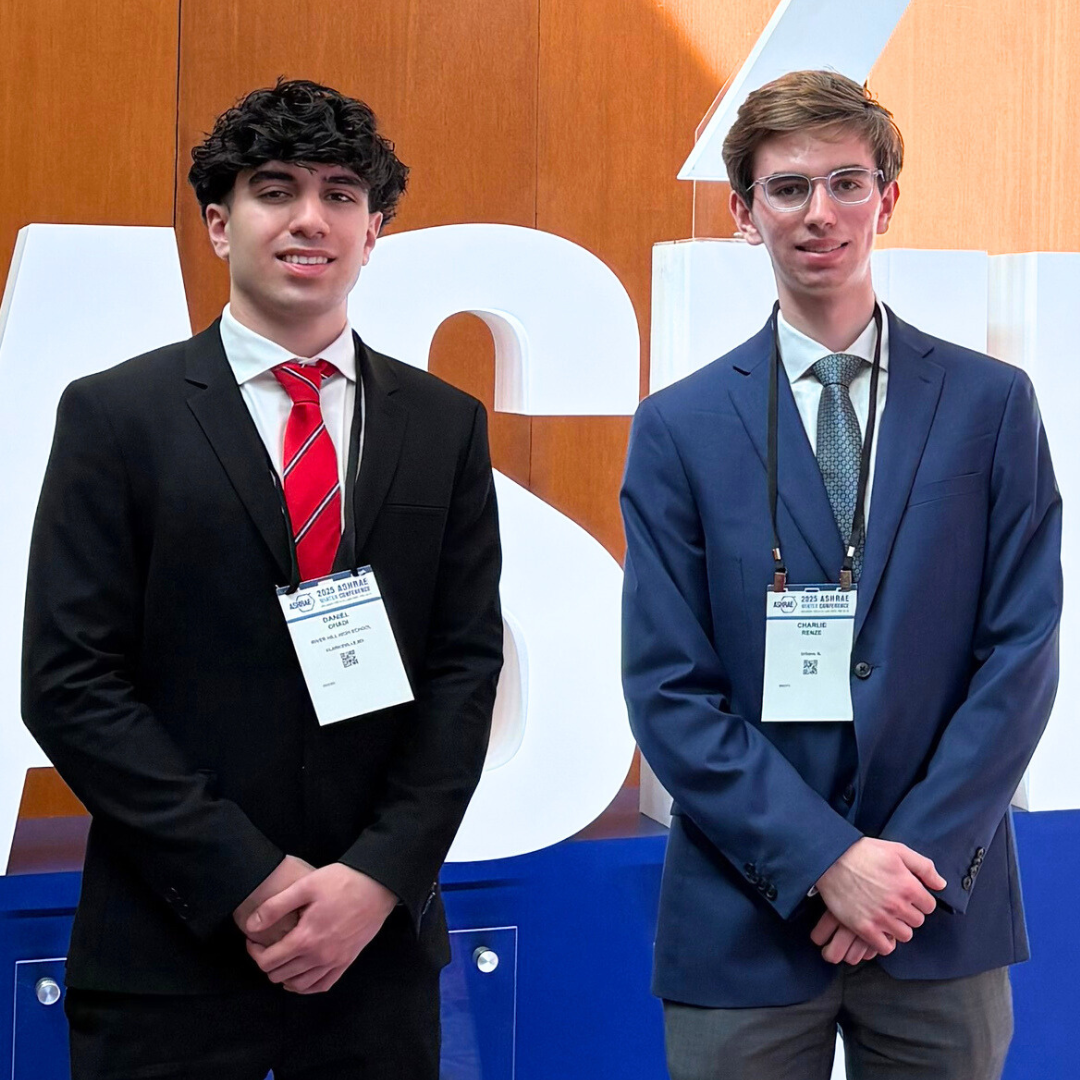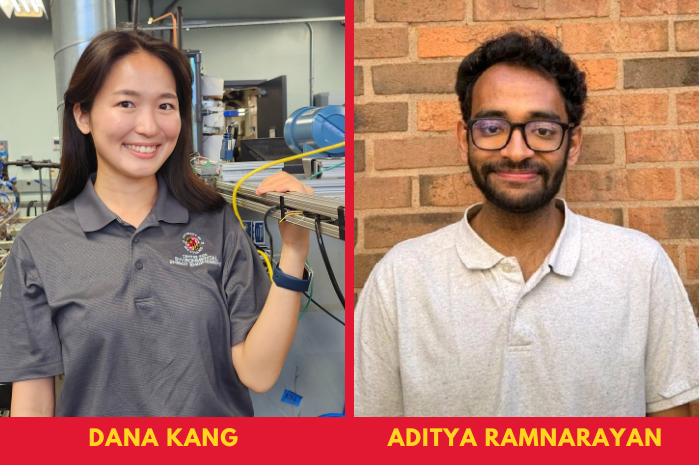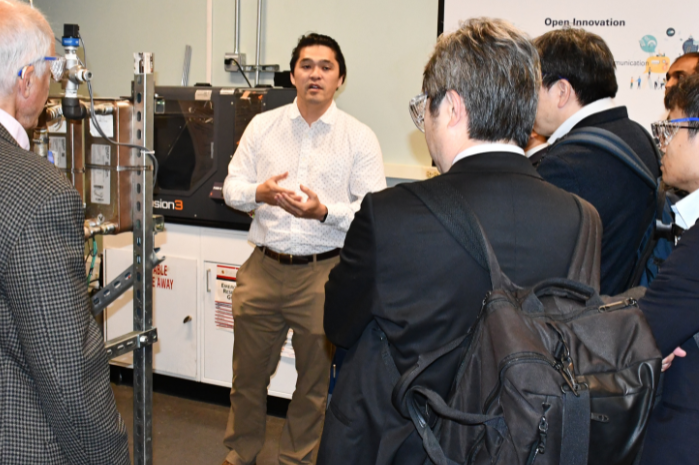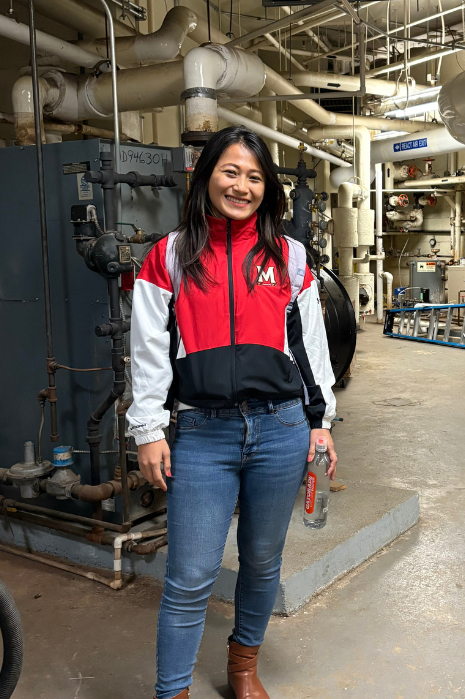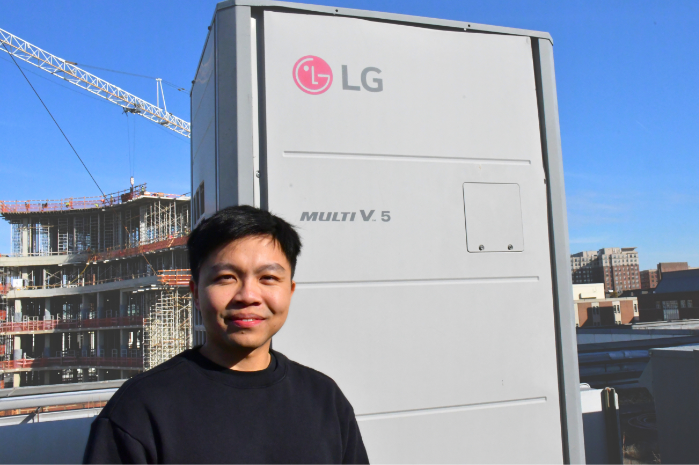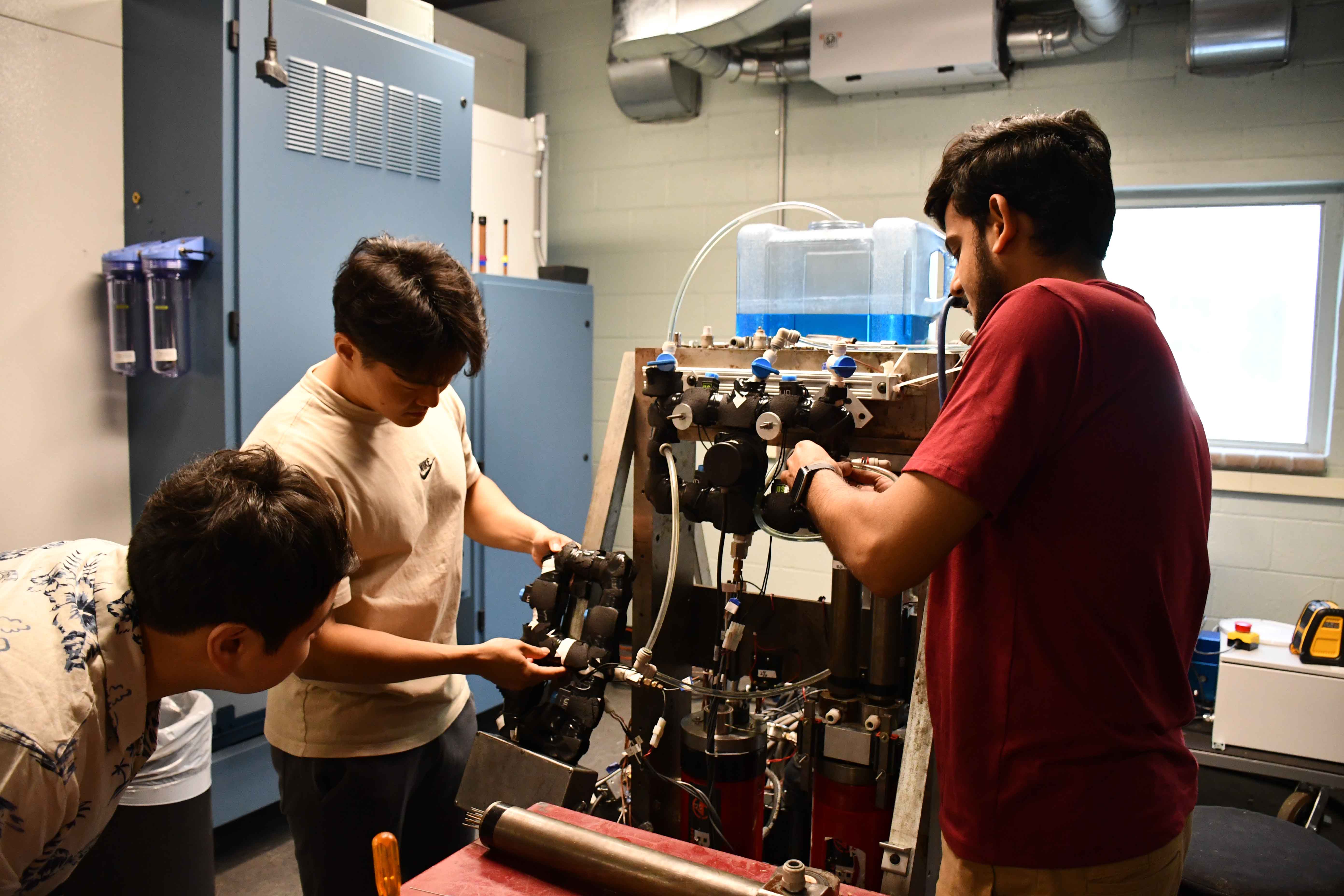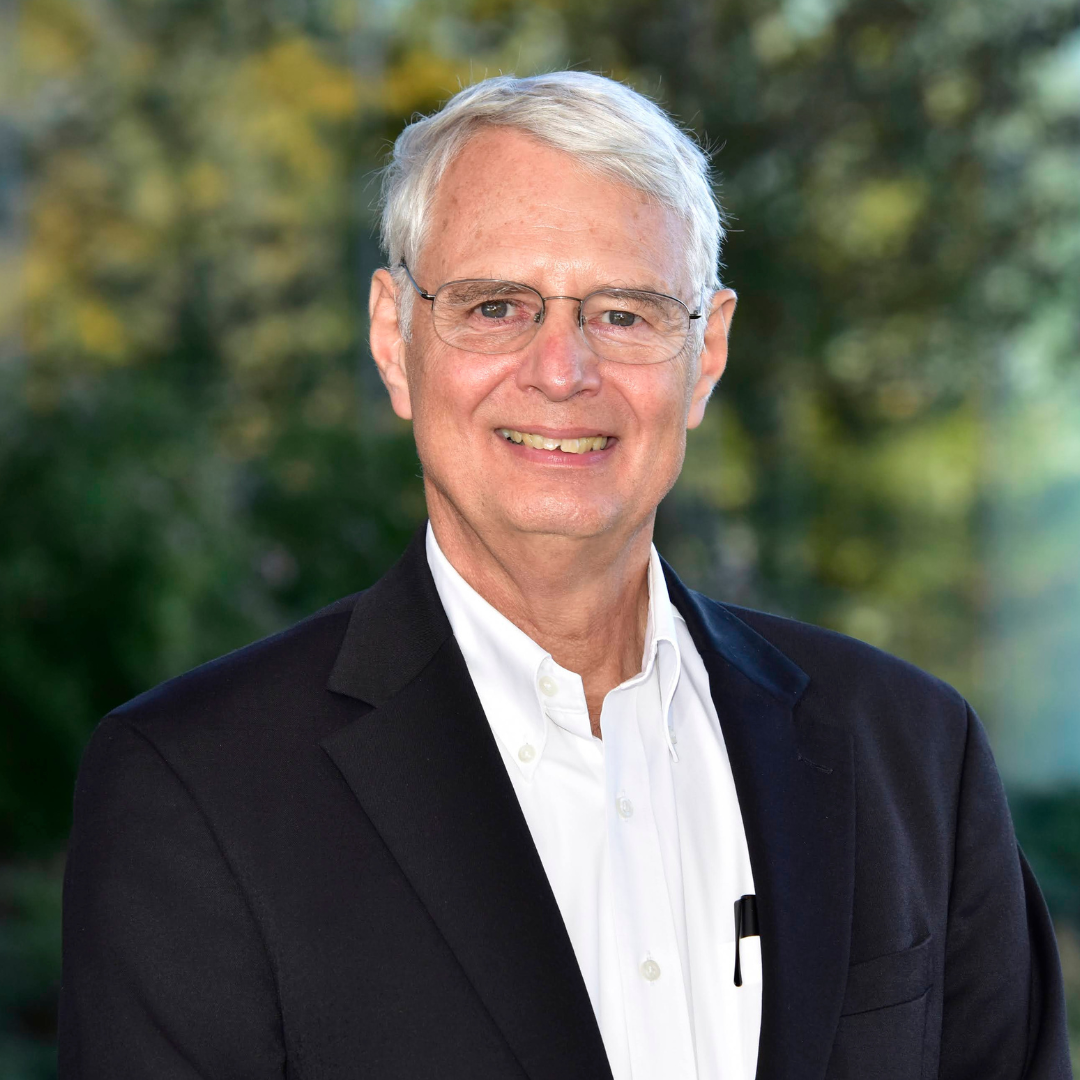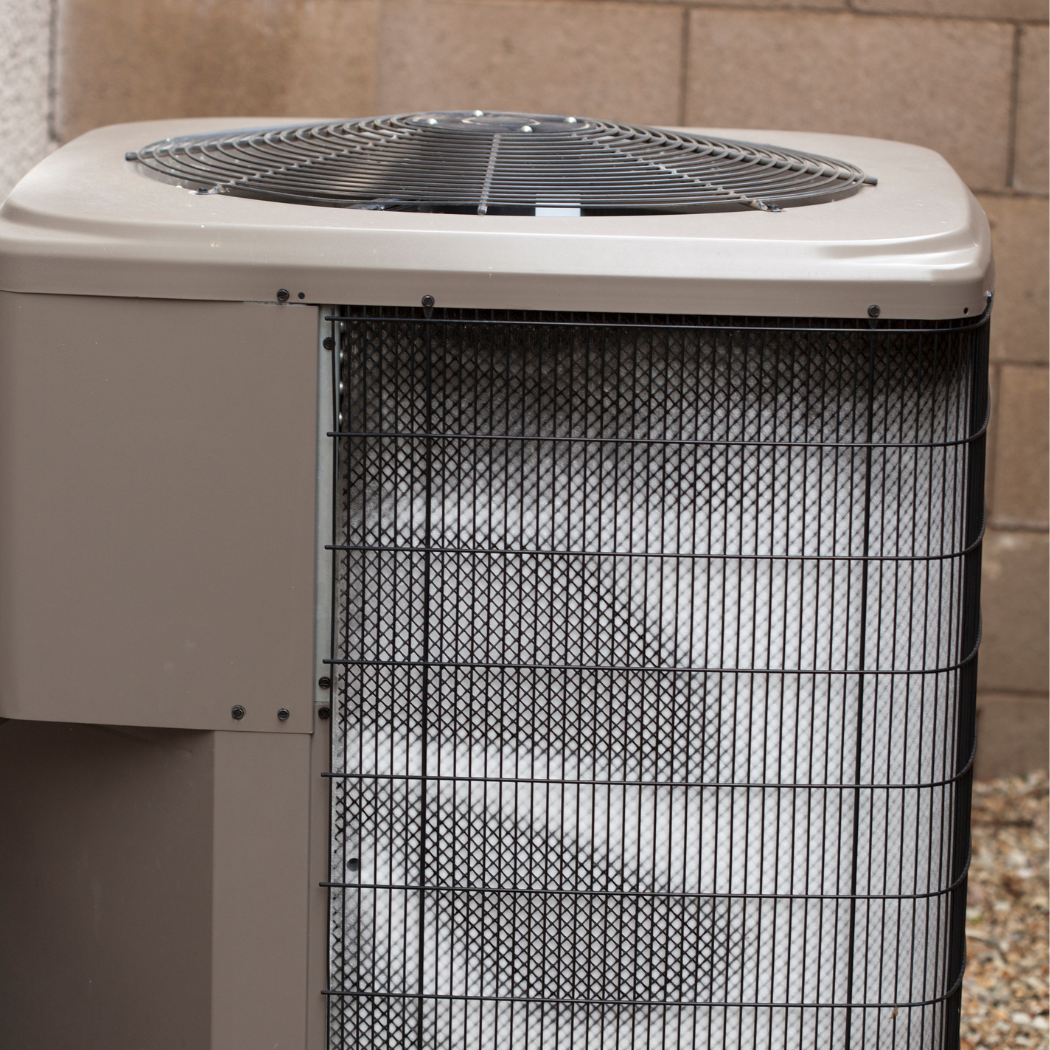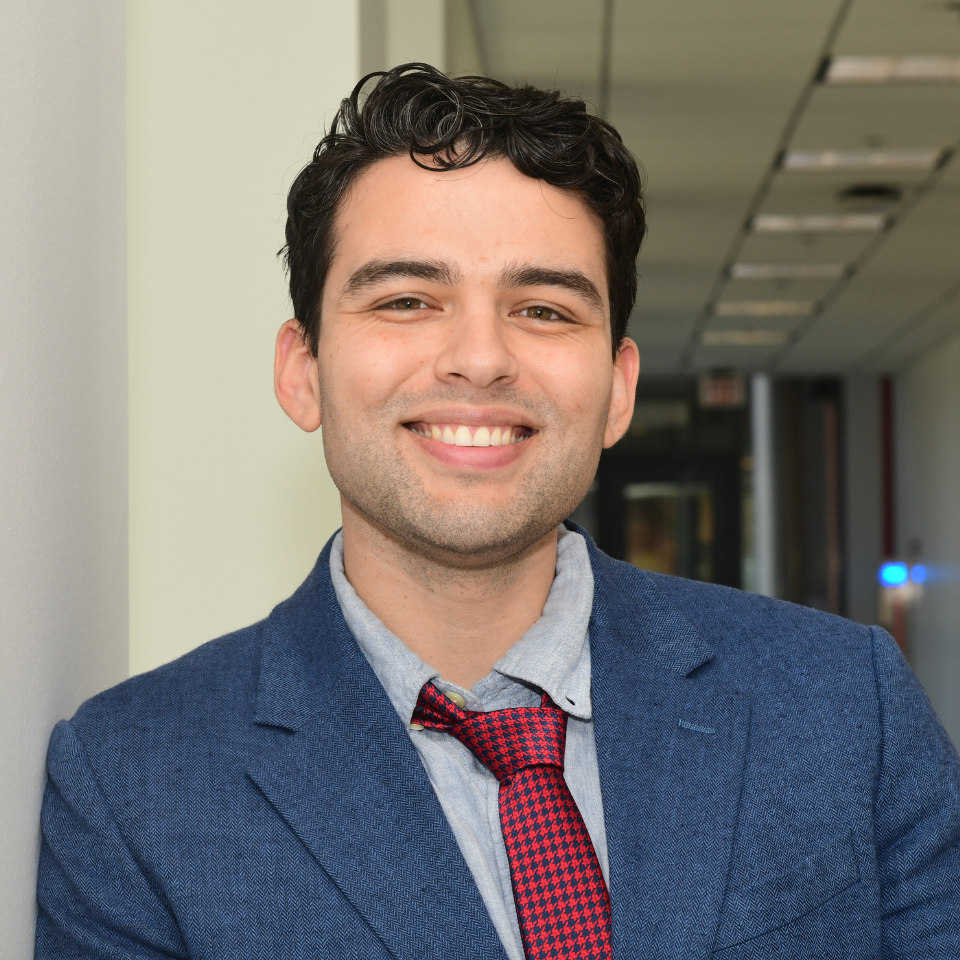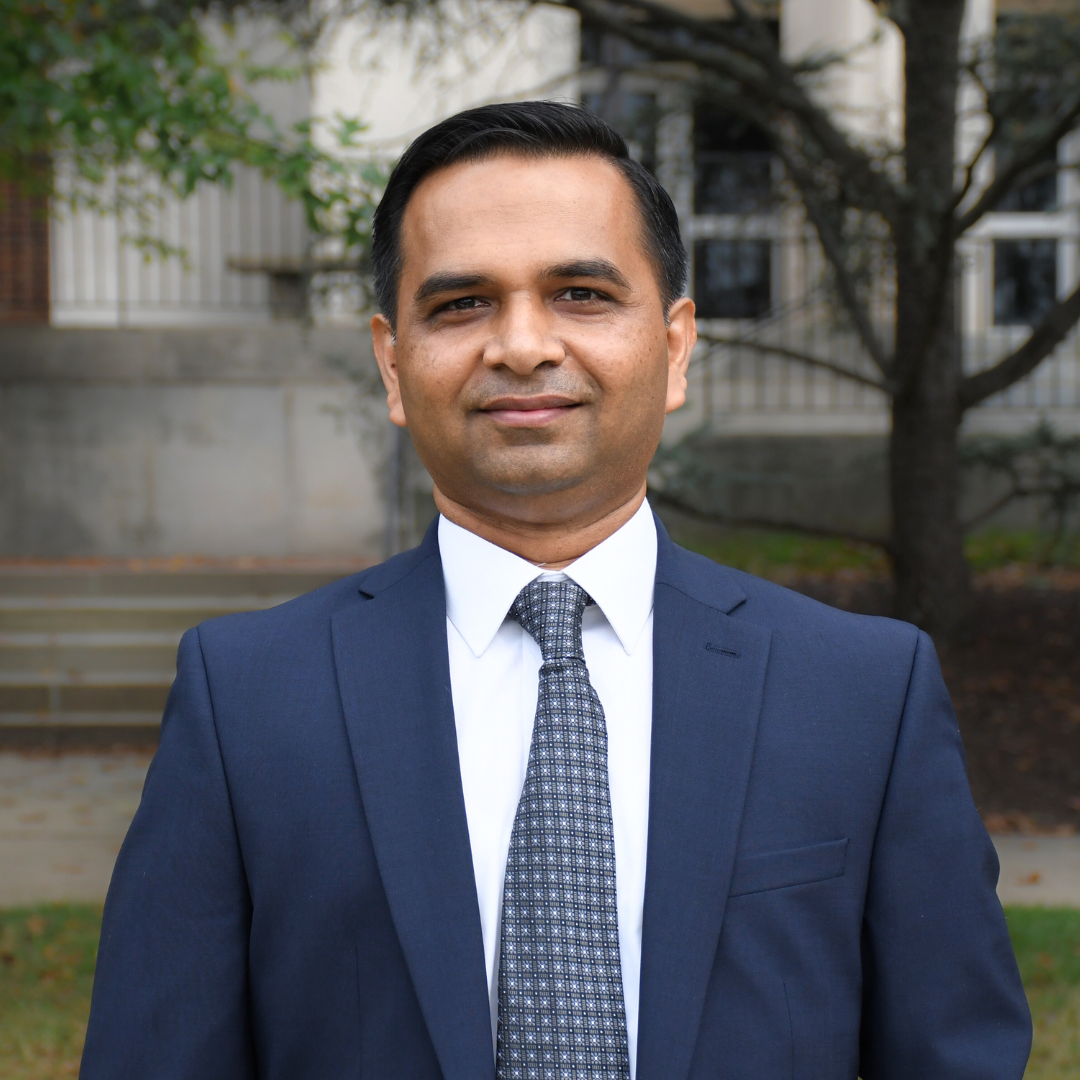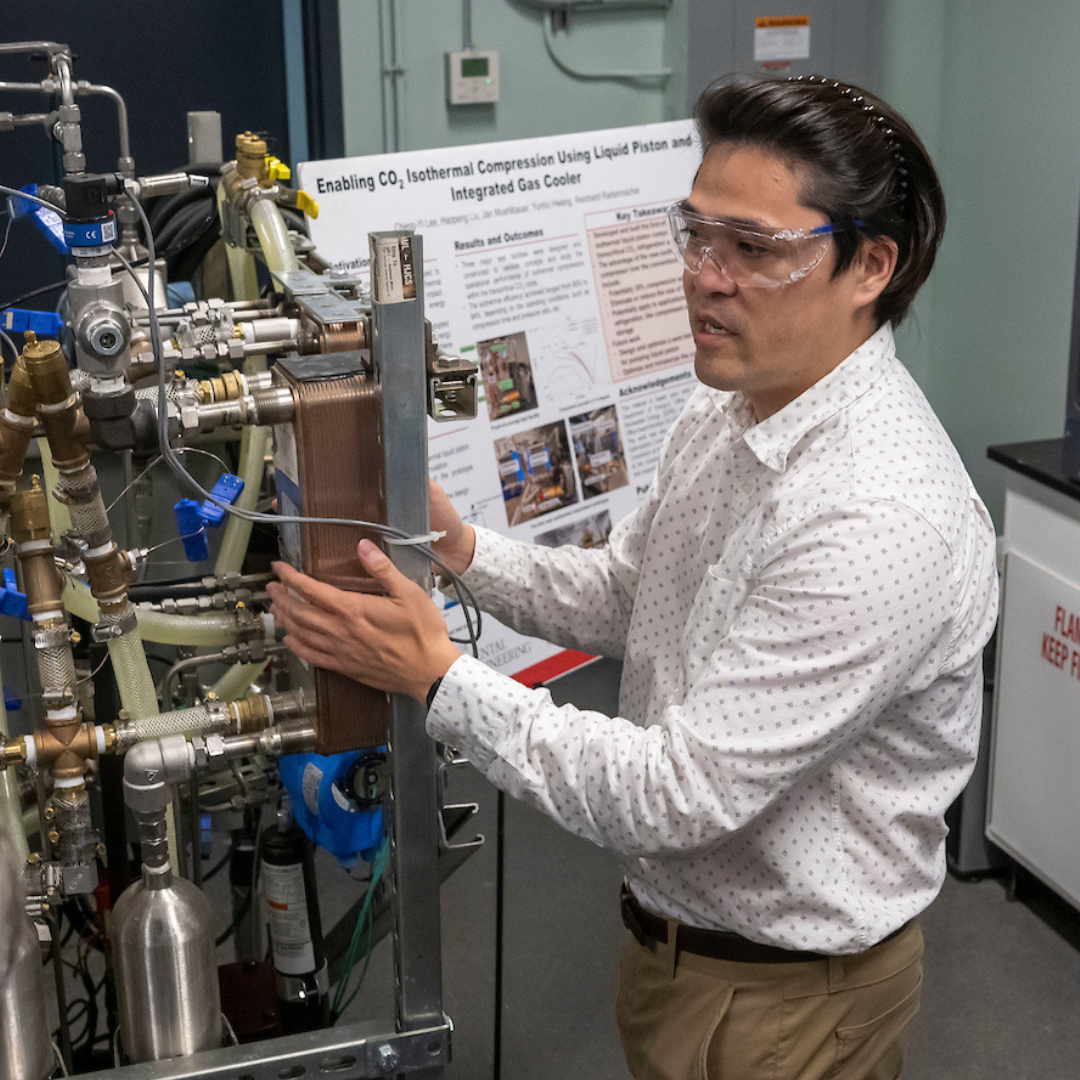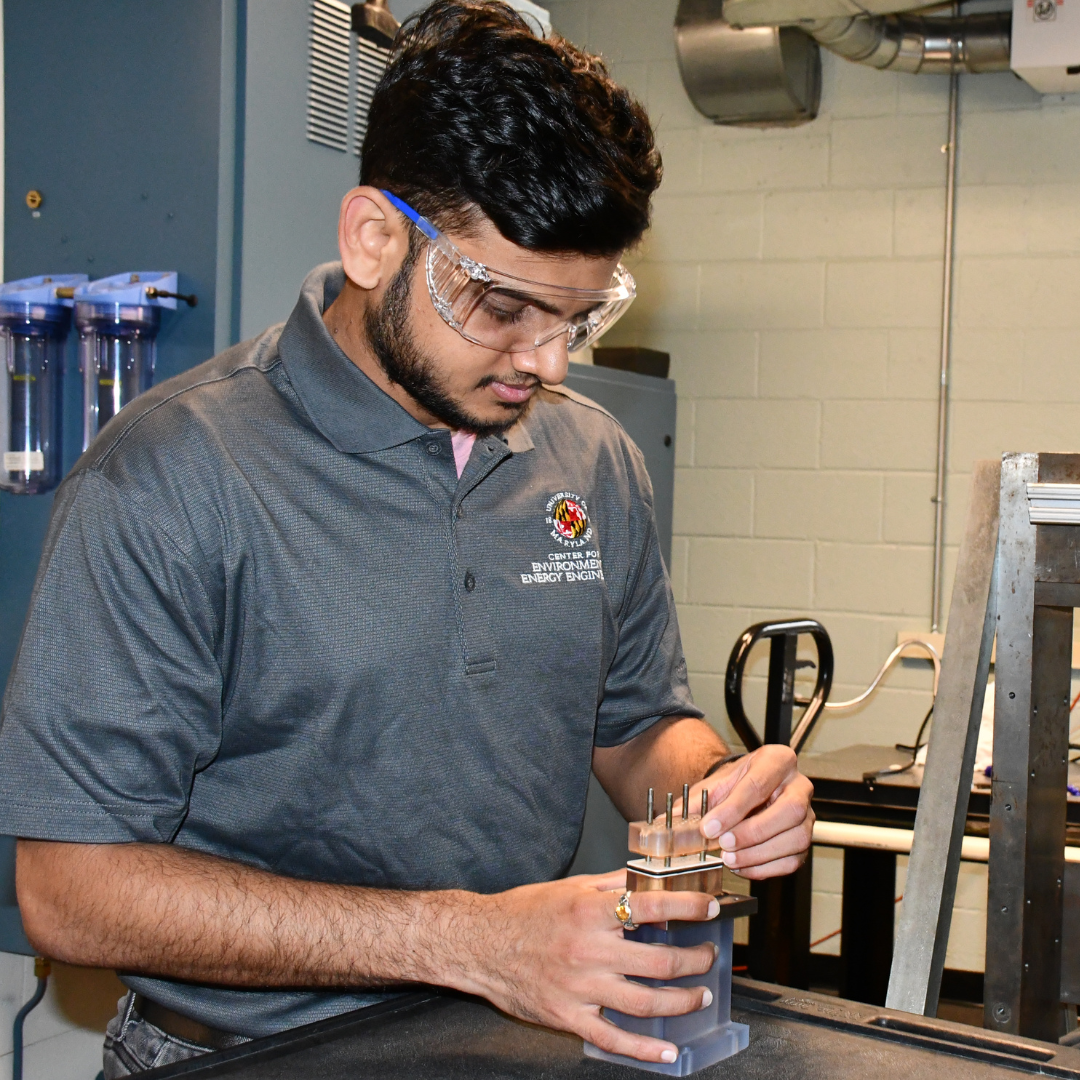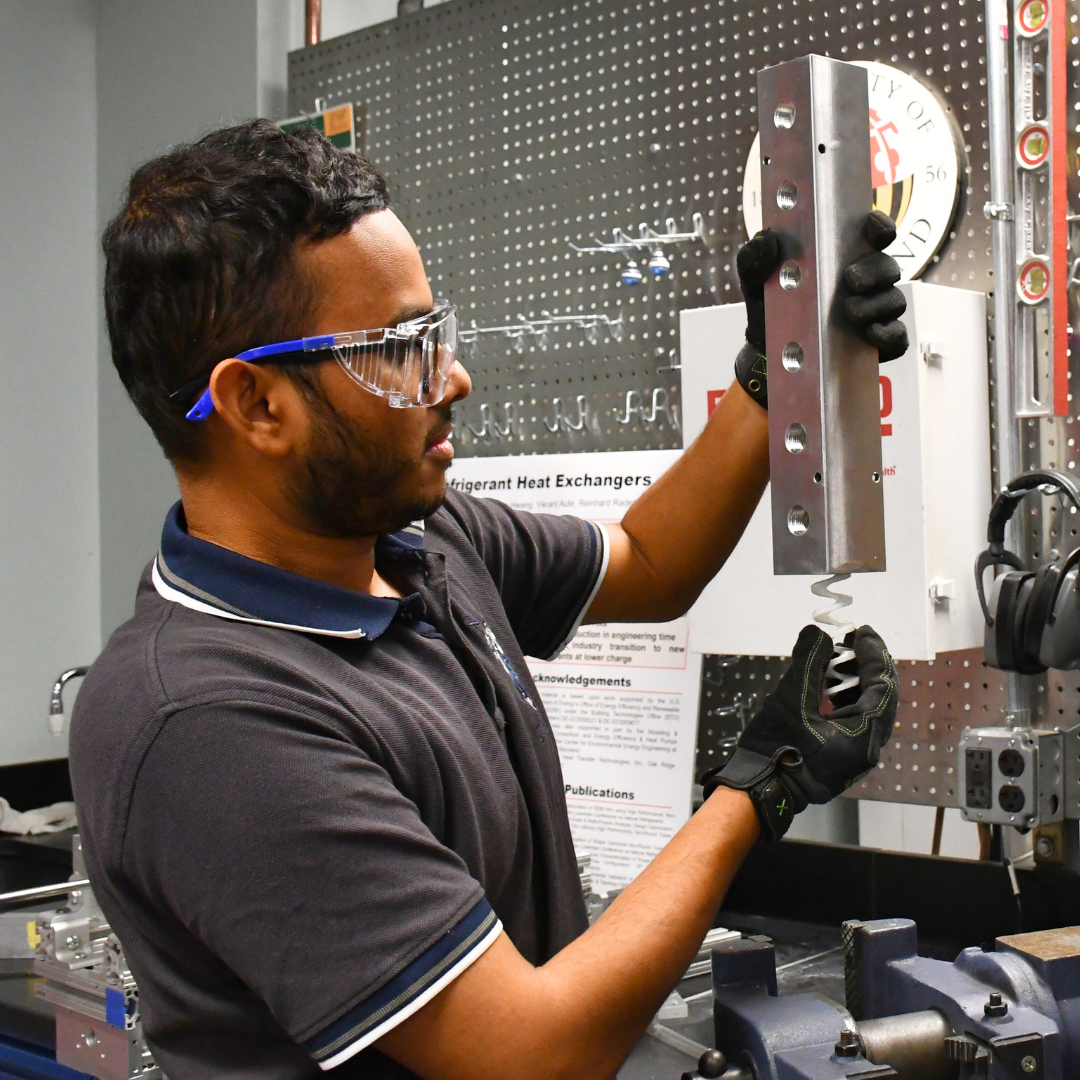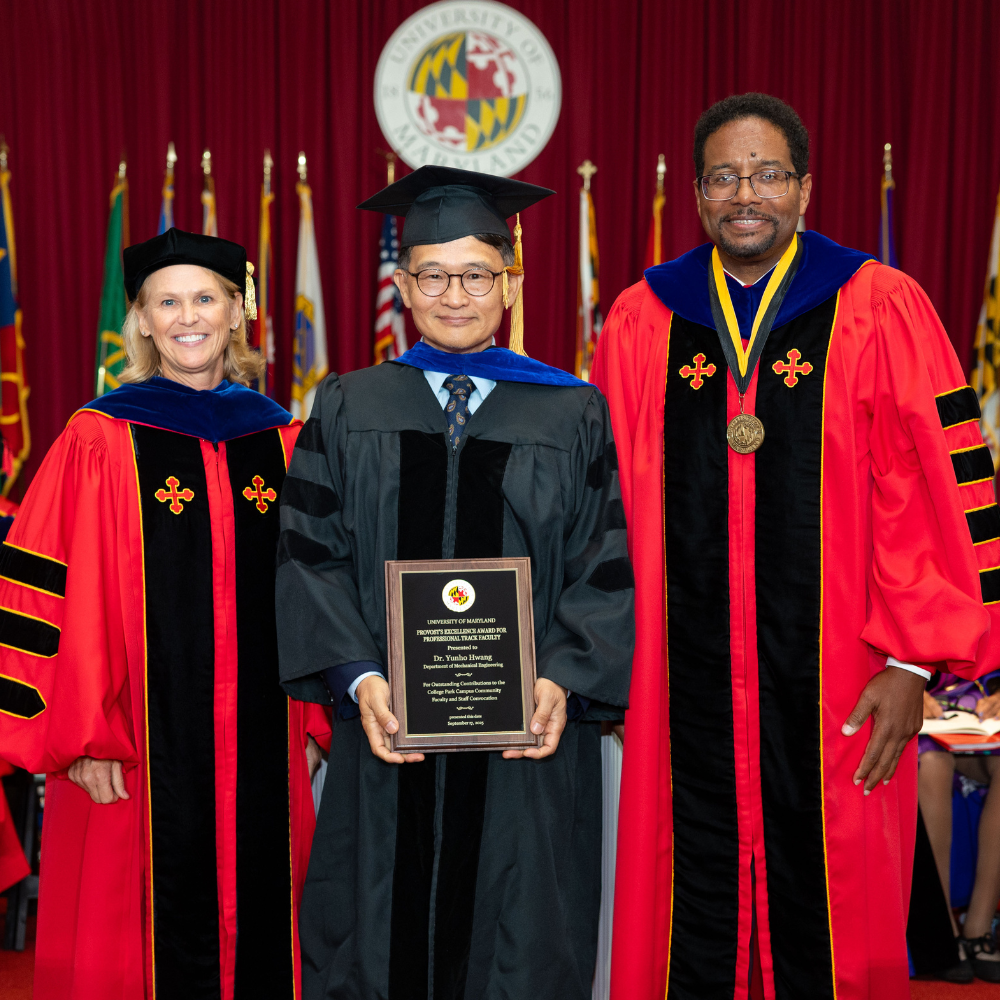News Story
CEEE Intern Uncovers Energy Inefficiencies at Md. High School
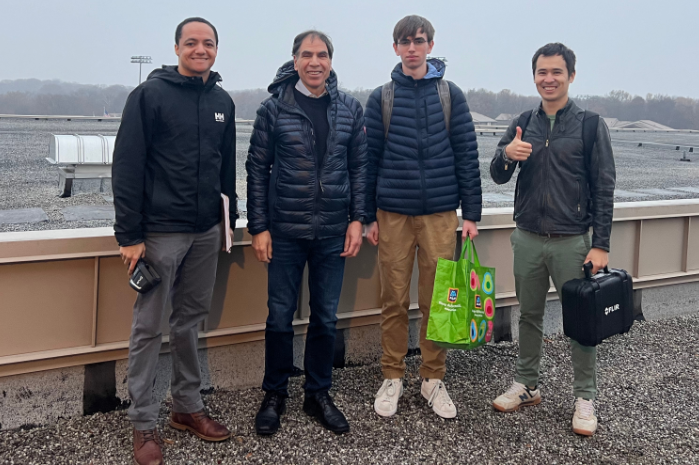
Intern Charlie Renze conducted an energy audit of his high school under the guidance of his mentors at CEEE’s S2TS laboratory.
As a graduating senior at Eleanor Roosevelt High School (ERHS) in Greenbelt, Md., Charlie Renze can’t begin to count the number of grades he’s received over the past four years. But this spring, the tables were turned. As an intern with the Smart and Small Thermal Systems (S2TS) laboratory at the University of Maryland’s Center for Environmental Energy Engineering (CEEE), Renze led an energy audit of ERHS and graded the school on its energy efficiency. While Renze is graduating with honors, the school didn’t fare as well, scoring 39 out of 100 on an Energy Star assessment, and receiving detailed feedback from the intern on ways to boost its efficiency.
Renze conducted his audit under the guidance of his mentors at CEEE’s S2TS laboratory, which is led by CEEE co-founder Dr. Michael Ohadi. Equipped with a thermal imaging camera; an infrared thermometer; temperature, humidity and lighting sensors; and measurement probes, Renze and the S2TS team thoroughly inspected the school — from the basement boiler room to the rooftop structure — gathering data every step along the way.
The S2TS lab typically hosts one or two high school interns each year, giving them an introduction to university research and an insider’s look at CEEE, an R&D leader in environmentally responsible heating, ventilation, air conditioning and refrigeration. Interns also learn from CEEE’s expertise in conducting energy audits that identify inefficiencies and ways to reduce greenhouse gas emissions. Through a contract with the state of Maryland, the S2TS lab has conducted onsite audits on over 22 million square feet of state-owned buildings since 2018, including several University of Maryland buildings, such as the Adele H. Stamp Student Union and Glenn L. Martin Hall. The state has aggressive plans to reduce harmful greenhouse gas emissions, decrease energy consumption, and save millions of dollars in utility costs. Efforts are going forward strongly, and the S2TS team is happy to contribute to that.
“These internships are a win-win,” says Ohadi. High school students get valuable exposure to engineering research, which helps them select their path forward and makes their college applications shine. “The lab gets a helping hand in our research, which helps our graduate students move their thesis progress forward,” Ohadi says. In Renze’s case, the lab had the opportunity to perform an energy audit on a high school for the first time. “We’ve audited universities and colleges before,” says Ohadi. “This was an opportunity to gauge a typical high school in this area to see how efficient it is and how much energy can be saved.”
Last summer, at the start of his internship, Renze spent hours poring over Ohadi’s lecture notes on energy audits and climate control engineering. Ohadi, along with faculty assistant Shwe Htet Htet Aung, graduate research assistant Aditya Ramnarayan, project engineer Alibek Bekenov and lab engineer Kyle Martin, were on hand to answer any questions and to introduce Renze to the range of research conducted in the lab. After demonstrating a firm understanding of the concepts, Renze began shadowing the team on its energy audits in the fall and was introduced to the software developed in the lab to analyze, rank and evaluate the energy efficiency of commercial buildings.
“When we suggested the idea of auditing his own high school, Charlie jumped at the opportunity and approached his school’s administration for approval,” says Ohadi, who has overseen dozens of high school and college interns throughout his career. “With the good ones, once you push them on the track, they keep going on their own energy and creativity.” In December, the team conducted its walkthrough of ERHS; this spring, Renze completed the audit and presented his findings to his school.
"When we suggested the idea of auditing his own high school, Charlie jumped at the opportunity and approached his school’s administration for approval. With the good [interns], once you push them on the track, they keep going on their own energy and creativity."
Michael Ohadi, CEEE co-founder and Minta Martin Professor of Mechanical Engineering
In addition to the onsite audit, Renze conducted extensive interviews with ERHS’s building manager and analyzed the school’s energy usage data. Along the way, the S2TS team discovered several efficiency issues, including an air duct leakage, outdated equipment, and energy overuse during unoccupied hours. Portable classrooms, used to relieve overcrowding at the school, also contributed to the school’s energy inefficiency.
“The building was less efficient than the recommended target values,” Renze says. In his audit report, he made several efficiency recommendations, including replacing an outdated gas boiler system with an electric system and installing an efficient chiller to take the place of two energy-guzzling units. “Both changes would significantly reduce carbon dioxide emissions,” he says.
Renze also proposes that the school install a rooftop solar array. “Even covering 50% of the roof in solar panels would generate 40% of the school’s electricity,” he says, reducing reliance on Pepco electricity, which is largely generated using fossil fuels.
He is hopeful that ERHS will institute his suggestions and notes that the school has already made significant improvements in efficiencies in recent years by replacing the cooling tower, improving the distribution ductwork in certain areas, and switching to LED lighting in 90% of the building.
Renze says the internship also deepened his interest in HVAC technology. “Air conditioning is something we usually take for granted, but it makes our lives so much better. It's really important to think about those things that we take for granted with our lifestyle but really do add up to make a huge environmental impact,” says Renze, who plans to major in mechanical engineering. He had his pick of labs to intern with at the University of Maryland, and chose a CEEE lab, “because I desire to make advancements in a sector that emits an increasing amount of greenhouse gas each year.”
For Ohadi and the rest of the S2TS team, it’s rewarding to know that their mentorship is helping to grow future engineers. “It takes some time on our part to work with interns,” says Ohadi, “but we see it as an investment in the workforce, in skill development and in getting students more and more interested in engineering.”
Published June 3, 2024
